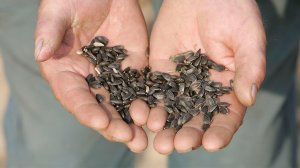Although South Africa has significant biogas potential, investment in the sector was being deterred by a lack of incentive schemes to make establishing such projects more affordable, energy company Uhuru Energy managing and technical director David Sonnenberg asserted on Tuesday.
Speaking at a meeting for interested parties, held in Sandton, he noted that the country was faced with a lack of energy security, too few available jobs, little foreign investment, high foreign exchange (forex) outflows to buy crude oil, and the highest greenhouse-gas emissions on the African continent.
Also speaking at the meeting, Chamber of Mines CEO Bheki Sibiya reiterated the challenges faced by local industry in terms of energy security, as well as pricing, stating that it was hampering the country’s economic development.
“So when we start speaking about beneficiation, how can we do that without reliable effective energy, and [therefore], we need to look at renewables,” he said.
Sonnenberg stated that the use of biogas as an energy source could help to overcome many of these challenges.
“There is a massive opportunity for biomass energy for local development in South Africa, for power, transport fuels and rural development away from cities. With this renewable energy option we can create energy where people live, which solves the problem of rural electrification.
“This would also allow us to lower the forex that goes out of the country for crude [oil],” Sonnenberg said.
He added that biomass could be used to generate electricity on a large scale, stating that, during this year, Europe would have a generation capacity of about 34 000 MW from biomass sources, which was equal to State-owned power utility’s Eskom’s 2014 generation capacity.
In addition to being used for electricity generation, biogas could also be used as fuel in vehicles, he said, stating that the process to upgrade a vehicle to run on biogas was simple.
The Industrial Development Corporation (IDC) was currently piloting this by upgrading ten taxis a day in Gauteng to run on biogas.
Sonnenberg noted that this upgrade to biomethane was resulting in fuel cost savings of between R3/ℓ and R4/ℓ.
He further noted that South Africa had advantages over Europe with regard to using biomass as an energy source, such as vast tracks of available land and a climate that was well-suited to growing biomass crops and harvesting year-round.
Uhuru had also identified several biomass options for South Africa that would prevent the country from having to use food sources, such as maize, to generate fuel.
These included using succulents like the cactus, as well as other types of plants such as the Spekboom, Moringa, and Vetiver grass to make biogas.
Sonnenberg said it was estimated that these crops could yield five to ten times more biogas than that provided by European crops.
Further, he said that several of the technologies currently being used elsewhere to produce biogas could be adapted to work well in South Africa, eliminating the need for entirely new technology development.
He noted that it would only take 300 000 ha of biomass growth, which amounted to 0.8% of the Northern Cape to produce the 9 600 MW of electricity generation capacity targeted to be added through the nuclear power programme over the next 15 years.
“Further, if we planted 11% of the marginal land of South Africa with biomass that would [produce] biogas, it would replace all of South Africa’s current fossil fuel. This would [also] instantly create four-million new jobs,” he stated.
However, despite these advantages biogas was not being widely adopted in Africa, which Sonnenberg said was a result of a lack of incentives, large plant sizes being required to be truly cost effective and concerns around efficiency.
IDC green industries specialist Raoul Goosen concurred that the lack of incentive schemes in South Africa was potentially deterring investment into biogas.
However, he noted that the Department of Energy, German development financier GIZ and the Southern African Biogas Industry Association was currently working on developing an incentive scheme for biogas projects, which should be in place by 2015.
Goosen added that other aspects that would also be needed to establish a viable local biogas industry included political willingness to act.
Further, in terms of securing finance, he noted that it would also be important for potential project developers to be able to prove that they had the necessary feedstocks available, as well as a market to take up the products.
EMAIL THIS ARTICLE SAVE THIS ARTICLE
To subscribe email subscriptions@creamermedia.co.za or click here
To advertise email advertising@creamermedia.co.za or click here











